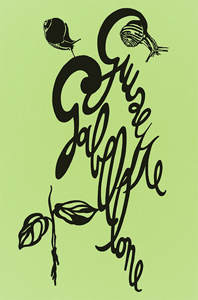New monograph.
Based on an exhibition that marks Giuseppe Gabellone's return to exhibiting in Italy after several years' absence, this monograph documents not only the series of works created for the occasion but also gathers documentation on the artist's output over the last seven years, analyzed in texts by Alessandro Rabottini – curator of the exhibition in Bergamo and editor of the publication – and Tom Morton.
“Time is a fundamental dimension of the work of Giuseppe Gabellone, and it resonates in all the works shown at the GAMeC in Bergamo. […] In his photographs and sculptures – the two main media around which Gabellone has developed his language, stretching the conventions and possibilities of both – time takes on forms that are not easy to grasp, in spite of the clarity that sets his images apart. It is a time that is simultaneously specific (or punctual, we might say) and extraneous; an absolute and present time, but one that goes beyond the contemporary; a time anchored in experience, yet also transcending it.” (Alessandro Rabottini)
Published on the occasion of Giuseppe Gabellone's exhibition at GAMeC, Bergamo, from March to May 2013.
Since the second half of the Nineties, the work of Giuseppe Gabellone (born 1973 in Brindisi, Italy, lives and works in Paris and Milan) has attracted the attention of the international public and critics because of his original approach to the languages of photography and sculpture, and its formal and conceptual rigour. As a result, at a very young age the artist was asked to participate in the Venice Biennale (in 1997 and 2003) as well as Documenta in Kassel (2002).
In his work, Gabellone explores the relationship between sculpture and photography, between two-dimensionality and three-dimensionality, between the image and its physicality, elevating the photographic medium and the concept of sculpture to new levels of language. While in his early years the artist's work established profound ties with the legacy of
Arte Povera and post-minimalist sculpture – above all in the way of conceiving of sculpture as a field of energy, transformation and temporality – more recently his work has increasingly been characterized by experimentation, not only with materials but also iconographic invention. This is exemplified by the series exploiting the language of bas-relief – and, consequently, the relationship between image, sculpture and architecture – that he created by experimenting with materials such as polyurethane foam, tobacco and aluminium powder.
The very idea of the image as a construction halfway between abstraction and reality is central to Gabellone's work, and this is evident if we consider one of the processes typical of his oeuvre: that of designing and building structures and objects that only exist as photographic images. This aspect of Gabellone's work calls into question photography as a form of recording reality, in favour of an idea of the photograph as a form of invention of that reality. This is one of the reasons that, in his images, prosaic and realistic elements – such as industrial and urban scenarios – coexist with forms and atmospheres that evoke a metaphysical and surreal imagination. Moreover, other forms of relation are established between photography and the materials of sculpture, based on the ability of both media to record and preserve traces of the passage of time, on the one hand through the impression of light and, on the other, through the sensitivity of surfaces. In his work, Gabellone creates a dialogue between abstraction and figuration, tactile and visual, natural and artificial, hyper-realism and decoration, augmenting the ambiguous relationship between the tactile qualities of an image and its existence in a non-physical elsewhere.









